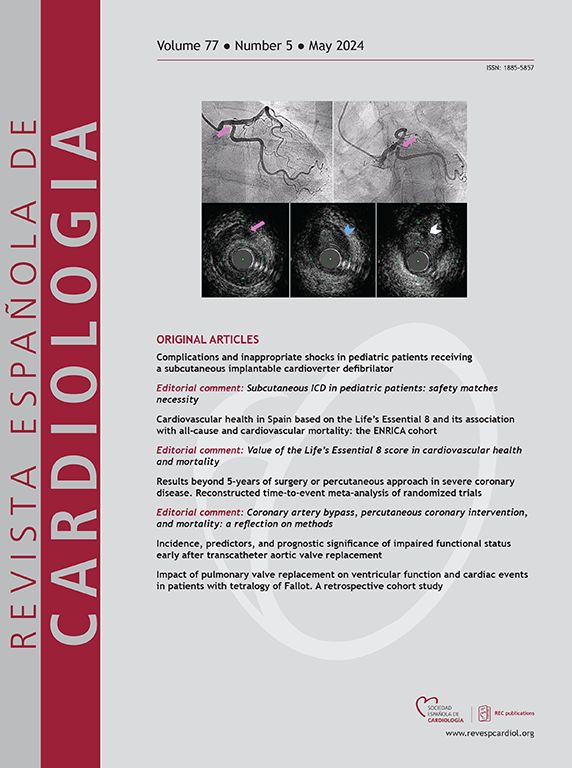在 SEC-Excellent-IC 认证单位接受随访的心衰患者的预后与单位类型的关系
IF 5.9
2区 医学
Q2 Medicine
引用次数: 0
摘要
介绍和目的由于组织和资源管理的改善,心力衰竭(HF)专科的发展改善了对该疾病患者的管理。西班牙心脏病学会(SEC)根据其复杂性和服务组合定义了3种类型的心衰单位(社区、专科和高级)。我们的目的是根据单位类型比较心衰患者的特征、治疗和结局。方法:我们分析了来自sec - excellence - ic质量认证项目注册表的数据,从2019年到2021年,45家sec认可的HF单位在两个1个月的截止日期(3月和10月)连续纳入了1716例患者。我们比较了三种单位的特点、治疗方法和1年预后。结果1716例患者中,社区住院13.2%,专科住院65.9%,晚期住院20.9%。死亡率(27.5 vs 15.5/100患者-年;P & lt;.001), HF入院率(39.7 vs 29.2/100例/年;P = 0.019),总失代偿(56.1 vs 40.5/100患者-年;P = 0.003), HF的总死亡/入院率(45.2 vs 31.4/100患者-年;P = .005),社区单位高于专科/先进单位。社区单位的随访是1年死亡率和入院率较高的独立预测因子。结论与更专业的随访单位相比,社区随访单位的失代偿率更高,1年死亡率增加。本文章由计算机程序翻译,如有差异,请以英文原文为准。
Pronóstico de los pacientes con insuficiencia cardiaca seguidos en unidades acreditadas en el programa SEC-Excelente-IC con relación al tipo de unidad
Introduction and objectives
The development of specific heart failure (HF) units has improved the management of patients with this disease due to improved organization and resource management. The Spanish Society of Cardiology (SEC) has defined 3 types of HF units (community, specialized, and advanced) based on their complexity and service portfolio. Our aim was to compare the characteristics, treatment, and outcomes of patients with HF according to the type of unit.
Methods
We analyzed data from the SEC-Excelente-IC quality accreditation program registry, with 1716 patients consecutively included in two 1-month cutoffs (March and October) from 2019 to 2021 by 45 SEC-accredited HF units. We compared the characteristics, treatment and 1-year outcomes between the 3 types of units.
Results
Of the 1716 patients, 13.2% were treated in community units, 65.9% in specialized units, and 20.9% in advanced units. The rates of mortality (27.5 vs 15.5/100 patients-year; P < .001), admissions for HF (39.7 vs 29.2/100 patients-year; P = .019), total decompensations (56.1 vs 40.5/100 patients-year; P = .003), and combined death/admission for HF (45.2 vs 31.4/100 patients-year; P = .005) were higher in community units than in specialized/advanced units. Follow-up in a community unit was an independent predictor of higher mortality and admissions at 1 year.
Conclusions
Compared with follow-up by more specialized units, follow-up in a community unit was associated with a higher decompensation rate and increased 1-year mortality.
求助全文
通过发布文献求助,成功后即可免费获取论文全文。
去求助
来源期刊

Revista espanola de cardiologia
医学-心血管系统
CiteScore
4.20
自引率
13.60%
发文量
257
审稿时长
28 days
期刊介绍:
Revista Española de Cardiología, Revista bilingüe científica internacional, dedicada a las enfermedades cardiovasculares, es la publicación oficial de la Sociedad Española de Cardiología.
 求助内容:
求助内容: 应助结果提醒方式:
应助结果提醒方式:


